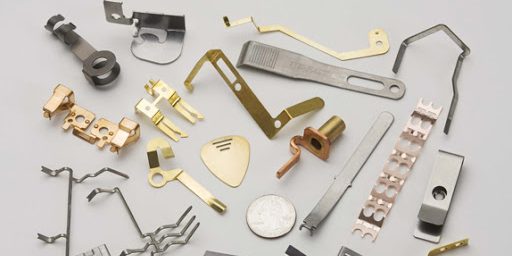Stamping process is a metal processing method, which is based on the plastic deformation of metal. It uses dies and stamping equipment to exert pressure on the sheet metal to cause plastic deformation or separation of the sheet metal, so as to obtain parts (stamping parts) with certain shape, size and performance.
Stamping process plays an important role in the manufacturing process of automobile body, especially for the large covering parts of automobile body. Because most of them are complex in shape, large in structure size, some are spatial curved surfaces, and the surface quality requirements are high, stamping processing methods can not be compared with other processing methods to produce these parts. The cab of the truck, front sheet metal parts, cargo panels, various body covering parts of the car and various frames of the bus are almost all made by stamping.
Process characteristics
(1) Stamping is a processing method with high production efficiency and low material consumption. Stamping process is applicable to the production of large quantities of parts and products, which is convenient for mechanization and automation, and has high production efficiency. At the same time, stamping production can not only strive to achieve less waste and no waste production, but also make full use of leftover materials even if there are edges and corners in some cases.
(2) The operation process is convenient and does not require the operator to have a high level of skill.
(3) Stamped parts generally do not need to be machined, and have high dimensional accuracy.
(4) Stamping parts have good interchangeability. The stamping processing stability is good. The same batch of stamping parts can be used interchangeably without affecting the assembly and product performance.
(5) As the stamping parts are made of plates, their surface quality is good, which provides convenient conditions for subsequent surface treatment processes (such as electroplating and painting).
(6) Stamping can obtain parts with high strength, high stiffness and light weight.
(7) The cost of stamping parts produced in batch with dies is low.
(8) Stamping can produce complicated parts which are difficult to be processed by other metal processing methods.
Stamping process
The stamping process can be divided into four basic processes:
Blanking: the stamping process to separate sheets (including punching, blanking, trimming, sectioning, etc.).
Bending: the stamping process of bending the sheet into a certain angle and shape along the bending curve.
Deep drawing: A stamping process that transforms flat sheet metal into various open hollow parts, or further changes the shape and size of hollow parts.
Fine blanking: for products with high punching accuracy, for products with high requirements on size and surface light band, the process required by the drawing can be achieved through fine blanking die.
Local forming: the stamping process (including flanging, bulging, leveling and shaping processes) in which various local deformations of different properties are used to change the shape of blanks or stampings.






